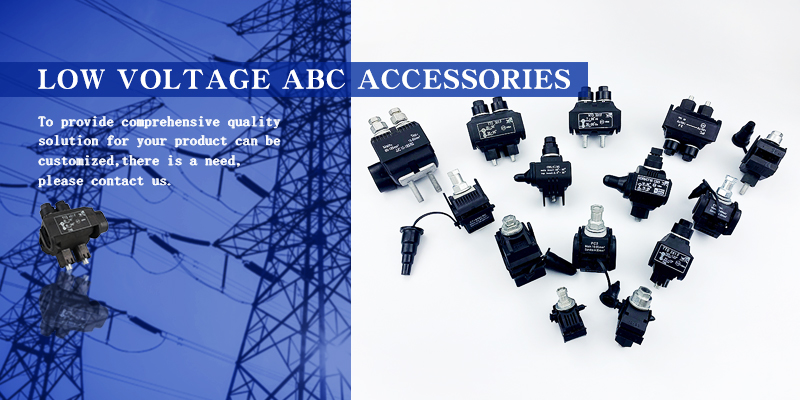The Low Voltage Insulated Piercing Connector has the advantages of fast branching and no stripping, stable contact with oxidation, pure copper tinned blades,
copper and aluminum cables for general use, flame retardant, fireproof and corrosion resistance, etc.
The construction and operation of the Low Voltage Insulated Piercing Connector technology is simple, and it is an economical and feasible construction process.
Helps increase labor productivity and reduce labor intensity. With the progress and development of society, modern high-rise and super high-rise buildings are
constantly increasing. The methods and techniques used in traditional power distribution trunk lines have become more and more unable to meet the needs of
modern construction. A fast and convenient installation and applicability are needed. Wide alternative products and processes.
Use insulation piercing clamps correctly
At present, a large number of overhead insulated wires are used in the construction and transformation of new rural electrification, which has greatly increased
the insulation rate of rural power grids. In the construction of overhead insulated conductors, insulation piercing clamps are widely used for line lap joints. However,
in the actual installation process, improper operation often leads to poor contact and wire jamming. Now, based on actual work experience, we will talk about several
essentials for the correct use of insulation piercing clamps.
Choose the specifications appropriately
Choose the corresponding insulation piercing clamp according to the specifications and models of the overlapping wires and the main conductor. High-voltage
insulation piercing clamps cannot be used on low-voltage power grids, and low-voltage insulation piercing clamps cannot be used on high-voltage power grids. Since
the insulation layer of high-voltage insulated wires is much thicker than that of low-voltage insulated wires, there will be poor contact, or even no power supply after
use, or the phenomenon of jamming of smaller-sized wires.
Use a torque wrench
During the installation of the insulation piercing clamp, a torque wrench must be used to clamp the insulation piercing clamp. After the clamp is in place with the wire,
the torque nut will automatically break and separate, so that the contact is good and tight after clamping and the wire will not be jammed. If other ordinary wrenches (such
as adjustable wrenches) are used for construction, the tightening screws will break or not break due to uneven force. It can also cause poor contact, or cause wire jamming
and breaking.
The clamp is only allowed to be used once
Since the torque nut of the piercing insulated wire clamp is composed of two layers inside and outside, the torque nut on the outer layer can only be used for clamping
the wire clamp. When the two wires are overlapped, with the tightening of the nut, the puncture needle of the piercing clip passes through the wire insulation layer and
hits the metal body of the wire. The needle will deform and become blunt, and the resistance will increase. The torque nut of the layer is disconnected. The inner torque
nut is used when disassembling the insulation piercing clamp. If it is used for the second time, it cannot guarantee that the two guides are in close contact.
Technical measures must be in place
When the insulated wire is struck by lightning, it is difficult to discharge the lightning current and it is easy to cause the disconnection. Therefore, when the line is in the
fifth gear and above, a lightning arrester should be installed at the beginning, end, and middle of the line. It is difficult to hang a temporary working grounding wire during
line maintenance. In order to facilitate safety technical measures during line maintenance, a piercing grounding ring must be pre-installed in an appropriate position.
Post time: Sep-27-2021

